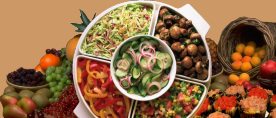Raw Milk
What Is Raw Milk?
Raw milk is milk that has not been cooked via pasteurization. Raw milk is different from whole milk (it's more whole than whole milk), and different from organic milk (though it's usually organic as well as raw).
What? Unpasteurized? Won't that make you sick? Well, here's an informal case study: I've been drinking it since I was a kid, and I'm still here. Plus I can assure you that when God led the people of Israel into what He called "a land flowing with milk and honey," the milk was not pasteurized. (Neither was the honey.) So people have been drinking unpasteurized milk for centuries to good effect.
People have gotten sick from milk, but only when the milk was contaminated. Many people are against raw milk for that reason. But contaminated pasteurized milk can make you just as sick. What many people don't know is that pasteurized milk that isn't contaminated can still make you sick by its inferior nature. It just takes longer.
What's the Up Side of Raw Milk?
Some say humans shouldn't drink milk from animals at all. They say Man is the only animal that does this--as if that's a bad thing. Man does a lot of things that animals don't do. And most of the comments I've read along those lines don't differentiate between real milk and pasteurized milk.
In fact, raw milk is a complete food. It's full of nutrients, enzymes, and bacteria that help digestion. We all have beneficial bacteria living in our intestines (if we're healthy, that is). Human beings can't digest food properly without intestinal bacteria. But pasteurization kills dangerous and helpful bacteria alike.
The Trouble with Cooking
We know that cooking destroys some nutrients, and "some" is a very important qualifier in this case. It's bad enough that cooking lowers milk's value as a food by destroying nutrients, but what's worse is the imbalance that results.
In case you think that the pasteurization temperature is so low that "cooking" isn't the proper term to use, consider the fact that the temperature is high enough to kill germs. Nutrients begin being destroyed at a mere 118 degrees although water doesn't boil until 212 degrees. Besides, it's hard to buy milk today that is not just pasteurized—it's "ultra-pasteurized." Instead of instant heating to over 100 degrees, the milk is heated to over 200 degrees. Not boiled, but how close do you have to get?
Ultra Dead
What consumer ever complained that his or her milk wasn't pasteurized enough? Did some hardy little microbes manage to sneak past the steam bath?
No. It's all about longer shelf life. In other words, the more dead the milk is, the longer it can sit on the shelf without going sour, the less refrigeration it needs, and the longer it lasts in your home. So the issue isn't your health, but the store's bottom line.
Those who favor ultra-pasteurization are usually not concerned about nutrients (or lack of same). They seem to think that if it sells it must be good.
...In which case, you now know more than they do.
If you are what you eat and you eat milk that's always dead and deformed, well...you do the math.
The Question of Balance
Calcium is a well-known component of milk. Being a mineral, calcium is not destroyed by pasteurization, but it is altered. It is made insoluble, so that your body can't absorb it. Calcium also works with phosphorus in such a way that your body can't use calcium properly unless phosphorus is present, and phosphorus is destroyed when milk is pasteurized.
This imbalance makes pasteurized milk worse than useless as a source of calcium; it's downright hazardous in the long run. No, children aren't dying left and right. But then again, many don't seem to be in great shape either!
You can read more about the power of raw milk and the danger of pasteurized milk here:
- The truth about the dangers and benefits of raw milk
- Why you don't want to drink pasteurized milk
- More information and references
